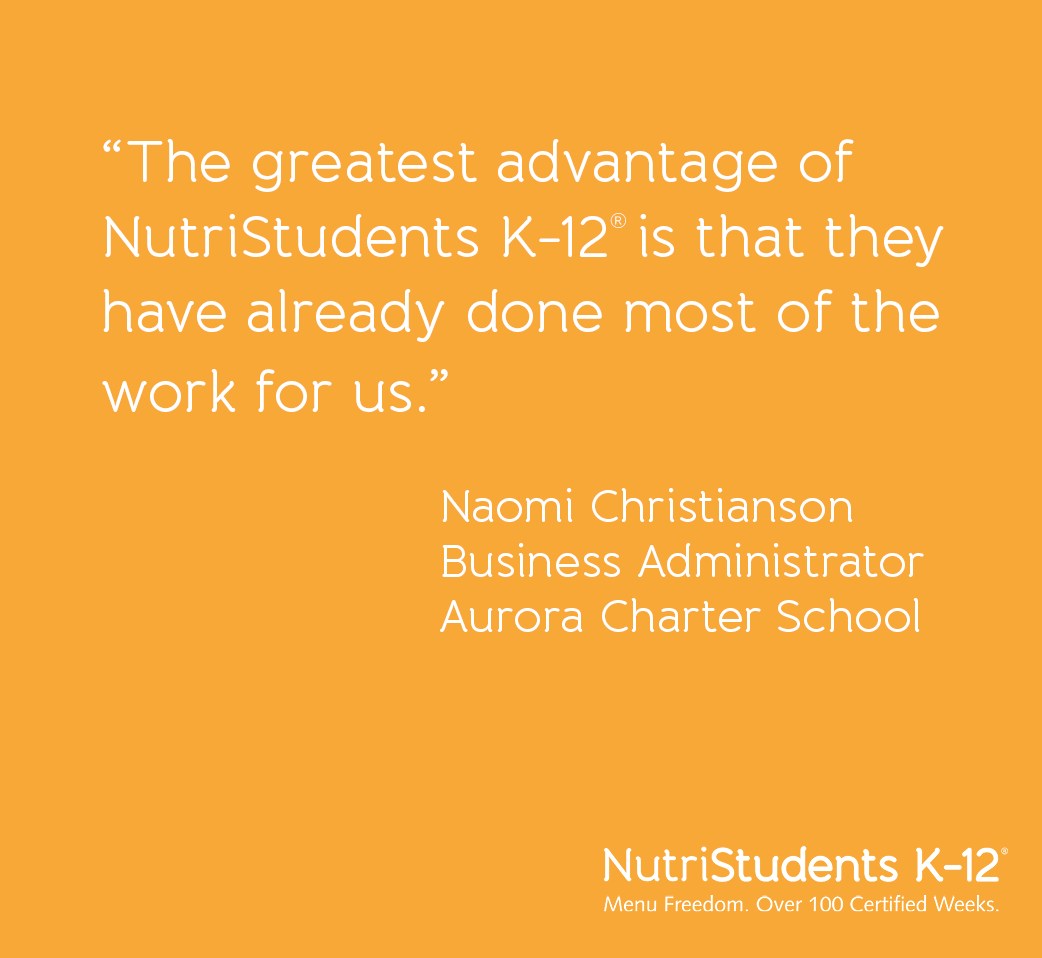Download PDF version
Grades: PreK-5
Free/Reduced Population: 96%
Location: Minneapolis
Good food is at the heart of a successful school foodservice program. There are no short cuts when it comes to pleasing students. Menus have to be visually appealing, flavorful and varied. And they are required to be nutritious to satisfy the USDA. With a rotation of more than 40 USDA-compliant weeks for every age group, that’s NutriStudents K-12 specialty, according to Naomi Christianson, business administrator at Aurora Charter School, a preK-5 school in Minneapolis serving a largely Latino population.
“The NutriStudents K-12 menus are healthy, diverse, fun,” she said. “Because they are so diligent about keeping their menus to a high standard, I don't have to worry about our students getting the nutrition they need. And they’re constantly re-evaluating their menu options and are willing to listen to the school and come up with solutions, when needed."
NutriStudents K-12 takes much of the work out of  menu planning and recordkeeping for its clients. Foodservice directors can be assured the menus, when followed precisely, meet all USDA guidelines for the National School Lunch and Breakfast Programs. That frees up their time to focus on directing staff to provide great service and encourage students to expand their taste palette.
menu planning and recordkeeping for its clients. Foodservice directors can be assured the menus, when followed precisely, meet all USDA guidelines for the National School Lunch and Breakfast Programs. That frees up their time to focus on directing staff to provide great service and encourage students to expand their taste palette.
“The greatest advantage to working with NutriStudents K-12 is that they have already done most of the work for us,” Christianson said. “Most of the time, a person heading a foodservice program would have to spend time developing tasty, regulated meals and menus, creating production records for every meal, researching USDA guidelines, developing HACCP manuals, etc. I never question if their menus are compliant or if their guidance and support in any area are correct. They know their food and their schools better than anyone.”
Aurora’s students have been further drawn into the school menus through nutrition-in-the-classroom exercises. The kindergarten-2nd grade students did a nutrition unit with their English teacher that had them create food wheels based on what they were going to eat for lunch. The exercise gave students a chance to see how nutritionally balanced their meals are.